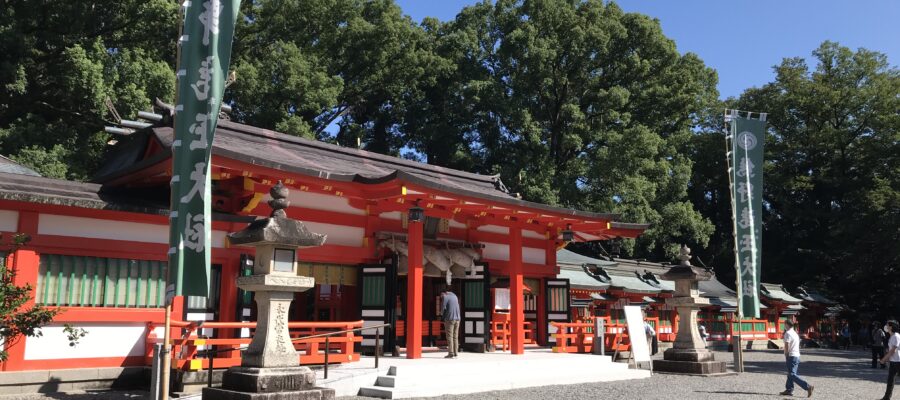舟下りの代わりにバスで移動
平安の昔、熊野本宮大社をお参りした巡礼者は、熊野川を舟で下って熊野三山の一つ、熊野速玉大社に参拝するルートを辿ったようです。現在は車やバスで、それほど時間をかけずに行くことができます。私もバスを使って移動しました。境内に近づくと鮮やかな朱色が目に入ってきます。
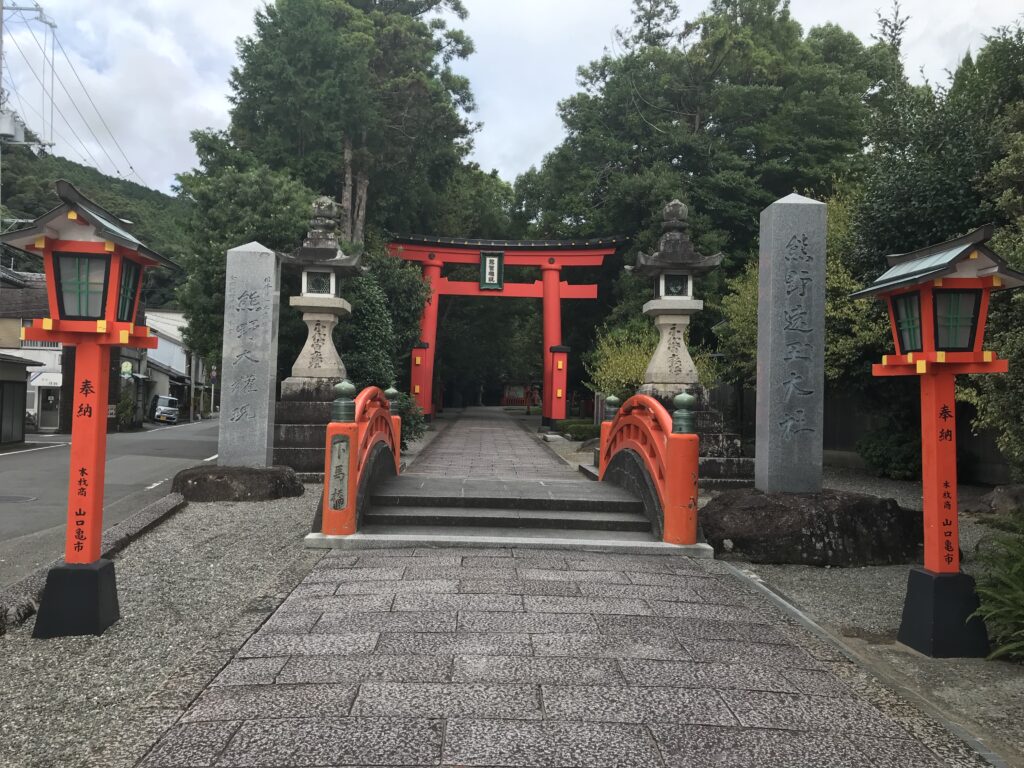
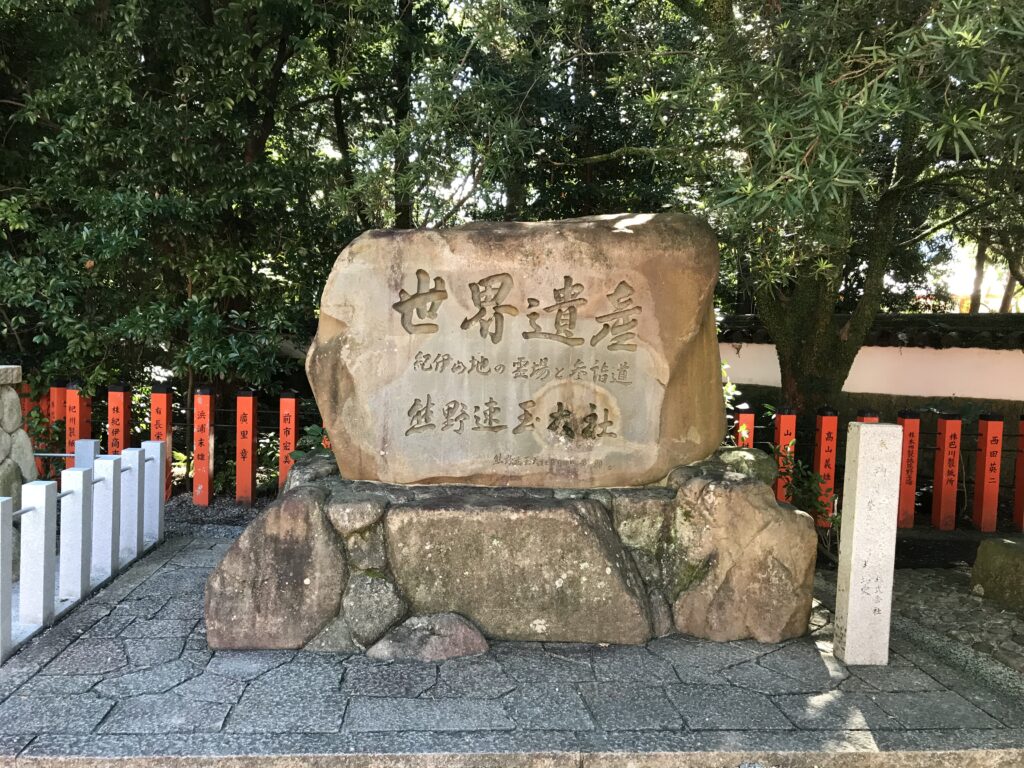
武蔵坊弁慶の像
境内に入ると武蔵坊弁慶の像があります。そういえば、出発地点のJR紀伊田辺駅の前にも弁慶像がありました。弁慶の生涯について、歴史的に謎に包まれているので、どこまで正しいのかは不明ですが、弁慶の出自は速玉大神に仕えた熊野三党の一つ鈴木一族とされているそうです。
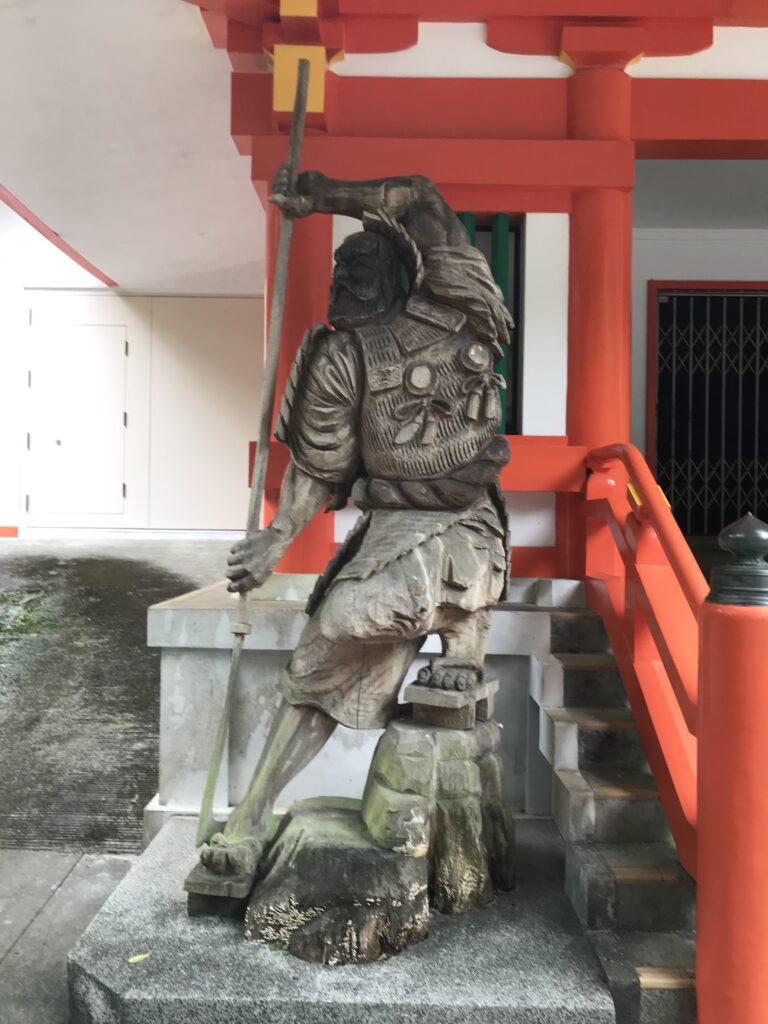
本殿に到達するまでに、神社の御神木である日本一大きな椰の前を通りました。樹齢は約1000年だそうです。椰の葉は霊威ある熊野詣でお守りとして古から大切にされています。残念ながら奇麗な落ち葉を見つけられなかったので、拾いませんでした。
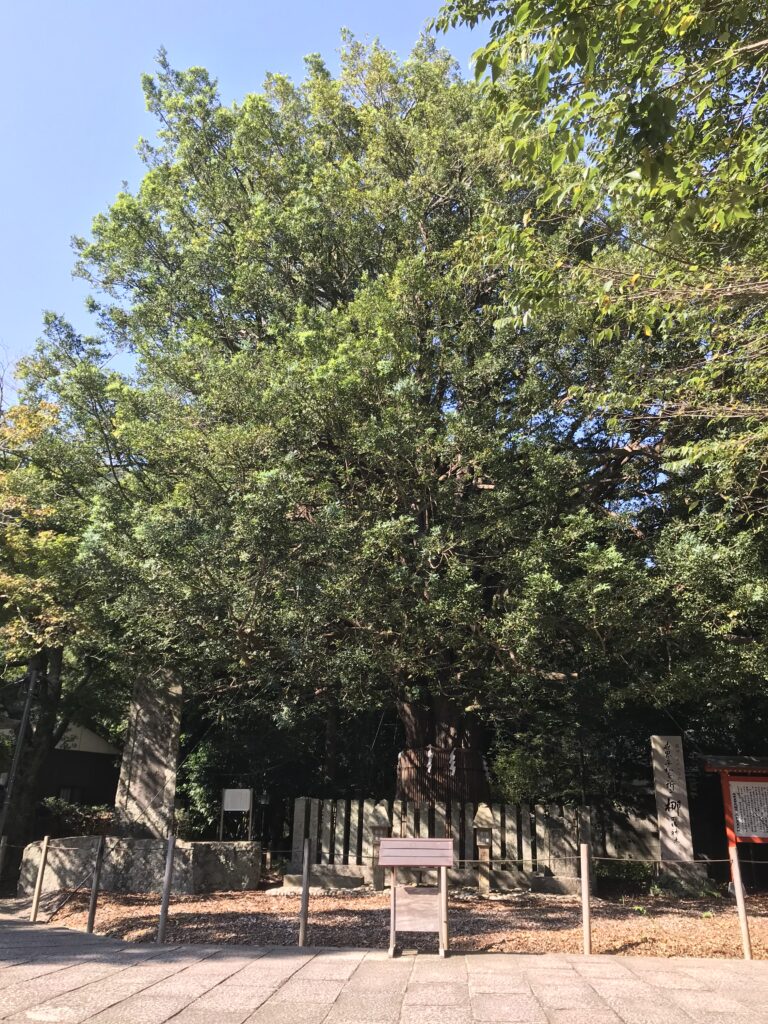
新たな出発をする「甦りの宮」
熊野速玉大社は「甦りの宮」として信仰されています。朝早く来たためか、日が昇るのにつれ、青空が広がっていき、本当に甦っていくような思いで本殿をお参りしました。ここで、生きる力をもう一度いただいて、新たな出発をする地でもあります。
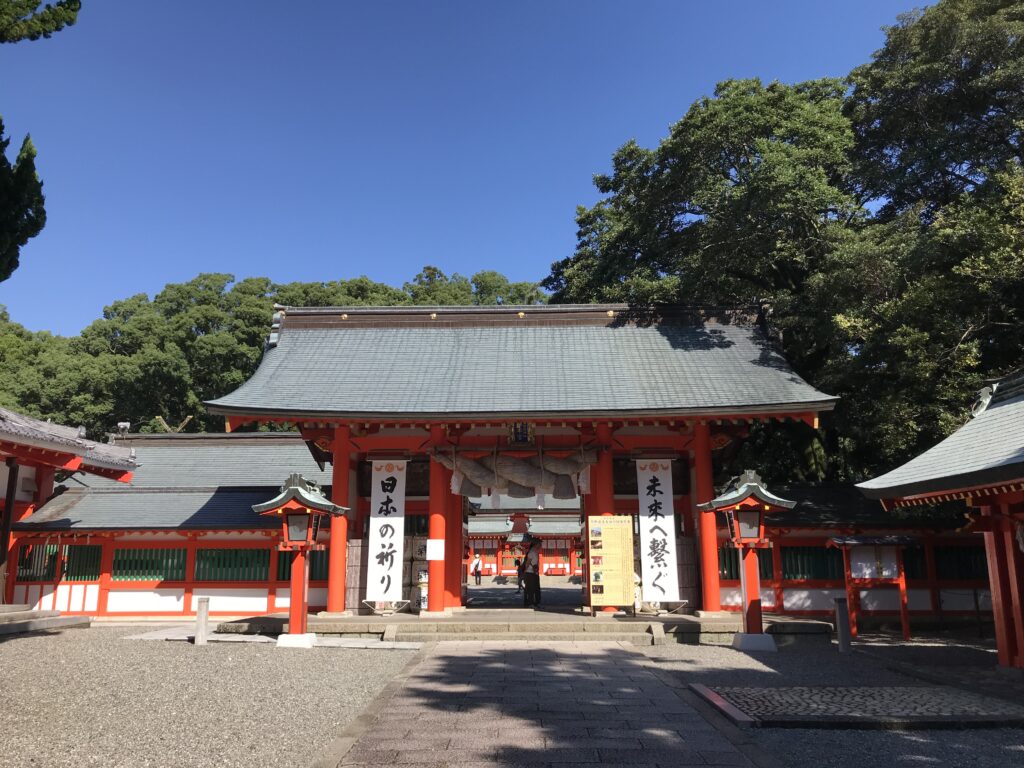
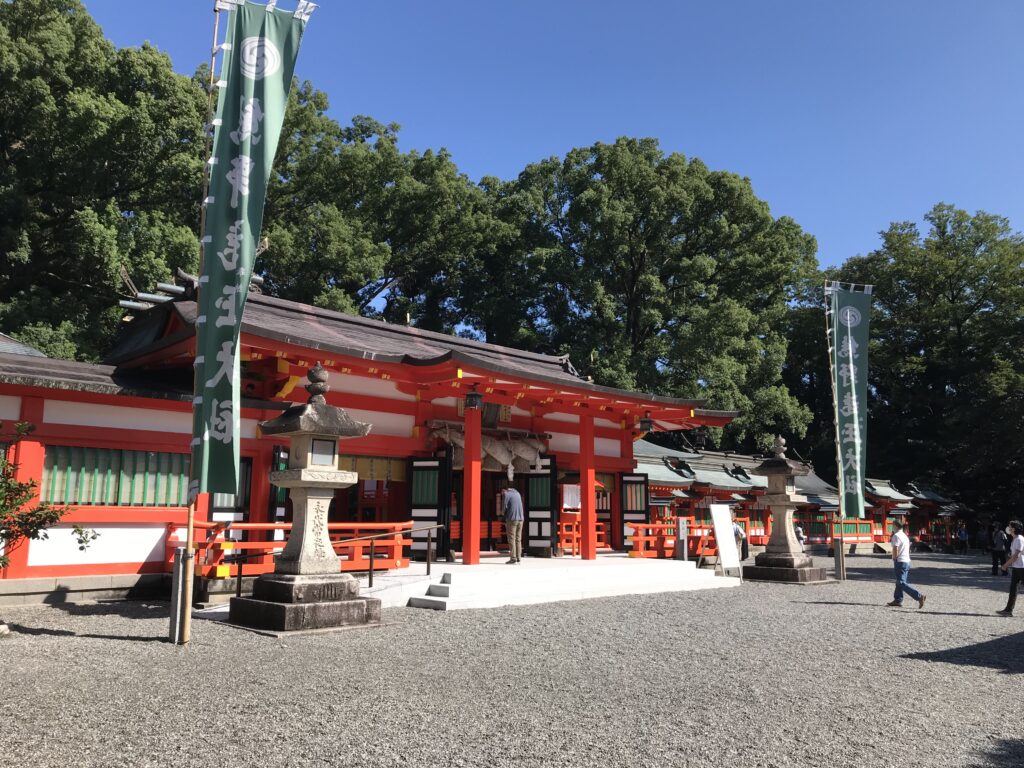
本殿の前には、御幸の回数を記した石碑が建っていました。宇多上皇から始まり、一番多いのは後白河上皇の33回、次に後鳥羽上皇の29回が続きます。後白河上皇や後鳥羽上皇の時代は、平安時代が終わり鎌倉時代に入り、武家政権が本格化する激動期に当たります。権力中枢が鎌倉に移っていく中、何度も熊野に来て、甦らないといけないほど、気持ちが追い詰められていたのかも知れません。(つづく)
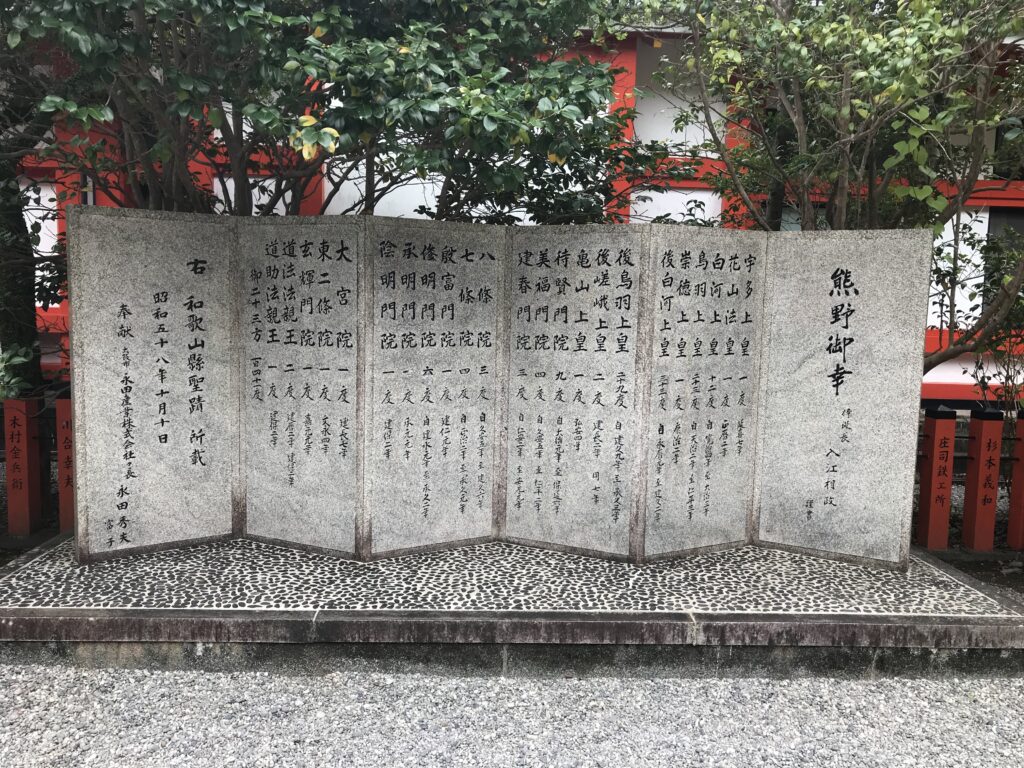
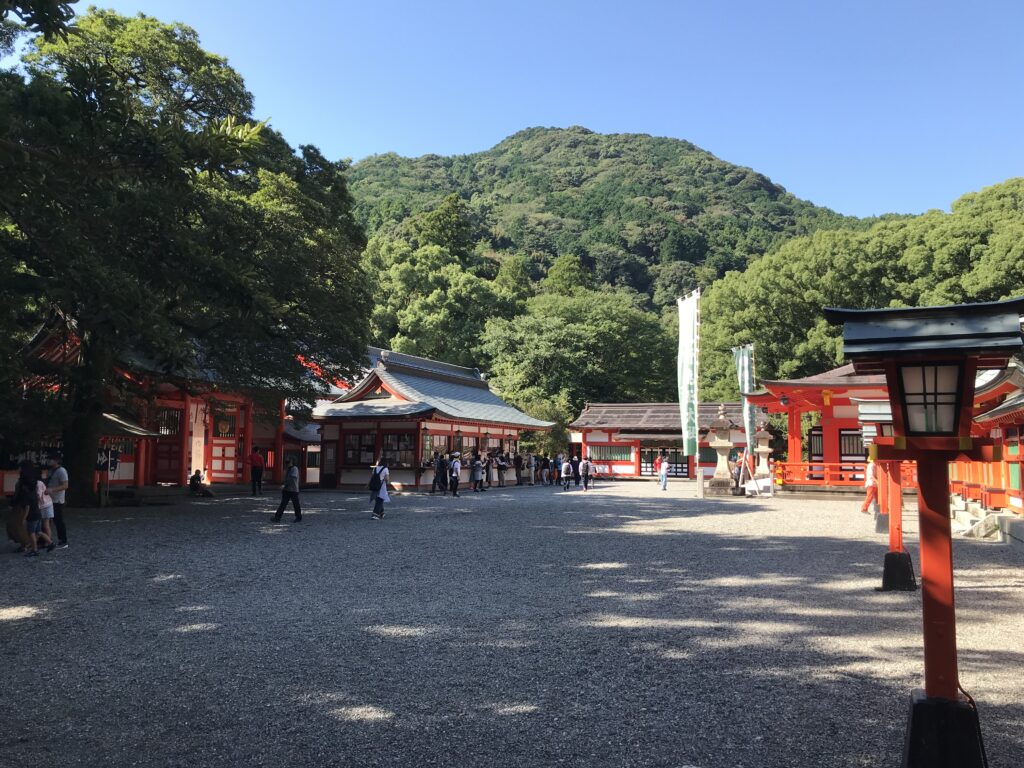
熊野速玉大社の御朱印
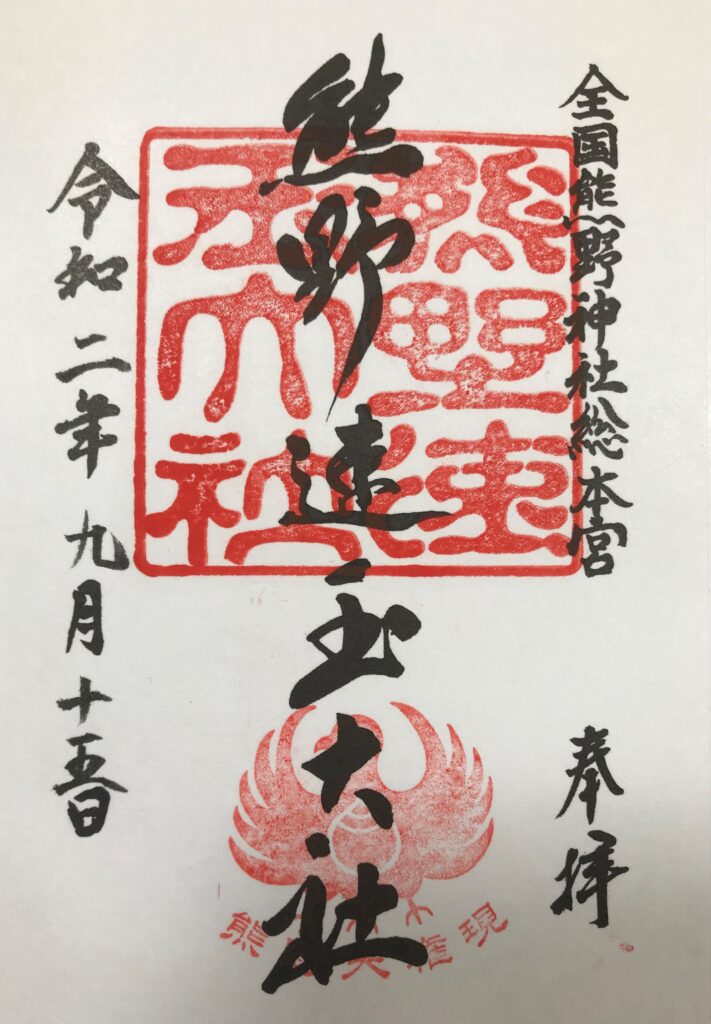
熊野速玉大社が紹介されている書籍
神仏霊場会の公式ガイドブックに熊野速玉大社が紹介されてます。
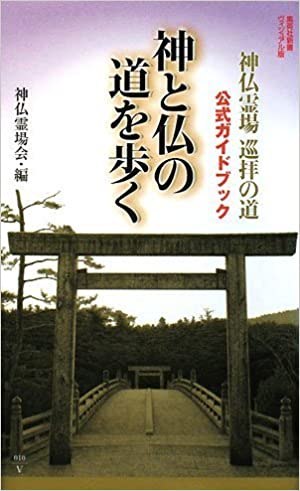
神と仏の道を歩く 神仏霊場巡拝の道公式ガイドブック (集英社新書ヴィジュアル版) [ 神仏霊場会 ]
価格:1,466円
(2021/5/6 09:24時点)
感想(5件)
Kumano Kodo (Ancient Road) ⑥Kumano Hayatama Grand Shrine (English)
Take a bus instead of a boat ride
In the Heian period (794-1185), pilgrims who visited the Kumano Hongu Grand Shrine took a route by boat down the Kumano River to visit Kumano Hayatama Grand Shrine, one of the three Kumano Grand Shrines. Nowadays, it is possible to get there by car or bus in less time. I also took a bus to get there. As I approached the precincts, I saw the bright vermilion color of the shrine.
Statue of Musashibo Benkei
When I entered the precincts, there was a statue of Musashibo Benkei. Come to think of it, there was also a statue of Benkei in front of JR Kii-Tanabe Station, my starting point. Benkei’s life is shrouded in historical mystery, so it’s unclear how much of it is true, but it is said that he came from the Suzuki clan, one of the three Kumano clans that served the god Hayatama.
Before reaching the main shrine, I passed by the largest willow tree in Japan, the sacred tree of the shrine. The tree is said to be about 1000 years old. The leaves of the willow tree have been treasured since ancient times as a talisman for spiritual pilgrimage to Kumano. Unfortunately, I could not find any beautiful fallen leaves, so I did not pick them up.
The Palace of Rebirth, a new beginning.
The Kumano Hayatama Grand Shrine is worshipped as the “Shrine of Rebirth. Perhaps it was because I came early in the morning, but as the sun rose, the sky became bluer and bluer, and I visited the main shrine with a feeling of being truly revived. This is the place to receive the strength to live again and make a new start.
In front of the main shrine, there was a stone monument that marked the number of times the shrine had been visited by emperors. Starting with ex-Emperor Uda, the most frequent was 33 times by ex-Emperor Go-Shirakawa, followed by 29 times by ex-Emperor Go-Toba. The era of ex-Emperors Go-Shirakawa and Go-Toba was a time of upheaval, when the Heian period ended and the Kamakura period began, and the samurai government was in full swing. As the center of power was shifting to Kamakura, they may have felt so trapped that they had to come back to Kumano several times to revive themselves. (To be continued)
Kumano Kodo (Ancienne route) ⑥Kumano Hayatama Grand Shrine (Français)
Prendre un bus au lieu d’une promenade en bateau
À l’époque Heian (794-1185), les pèlerins qui visitaient le Grand sanctuaire de Kumano Hongu empruntaient un itinéraire en bateau sur la rivière Kumano pour visiter le Grand sanctuaire de Kumano Hayatama, l’un des trois Grands sanctuaires de Kumano. Aujourd’hui, il est possible de s’y rendre en voiture ou en bus en moins de temps. J’ai également pris un bus pour m’y rendre. En approchant de l’enceinte, j’ai vu la couleur vermillon brillante du sanctuaire.
Statue de Musashibo Benkei
Quand je suis entré dans l’enceinte, il y avait une statue de Musashibo Benkei. En y réfléchissant, il y avait aussi une statue de Benkei devant la gare JR Kii-Tanabe, mon point de départ. La vie de Benkei est entourée d’un mystère historique, il est donc difficile de savoir ce qui est vrai, mais on dit qu’il venait du clan Suzuki, l’un des trois clans de Kumano qui servaient le dieu Hayatama.
Avant d’atteindre le sanctuaire principal, je suis passé devant le plus grand saule du Japon, l’arbre sacré du sanctuaire. On dit que l’arbre a environ 1000 ans. Depuis les temps anciens, les feuilles du saule sont considérées comme un talisman pour le pèlerinage spirituel à Kumano. Malheureusement, je n’ai pas trouvé de belles feuilles tombées, donc je ne les ai pas ramassées.
Le Palais de la renaissance, un nouveau départ.
Le Grand sanctuaire Hayatama de Kumano est vénéré comme le “sanctuaire de la renaissance”. C’est peut-être parce que je suis venu tôt le matin, mais à mesure que le soleil se levait, le ciel devenait de plus en plus bleu, et j’ai visité le sanctuaire principal avec le sentiment d’être vraiment revivifié. C’est l’endroit où l’on reçoit la force de vivre à nouveau et de prendre un nouveau départ.
Devant le sanctuaire principal, il y avait un monument en pierre qui marquait le nombre de fois que le sanctuaire avait été visité par des empereurs. En commençant par l’ex-empereur Uda, le plus fréquent était l’ex-empereur Go-Shirakawa, 33 fois, suivi par l’ex-empereur Go-Toba, 29 fois. L’ère des ex-empereurs Go-Shirakawa et Go-Toba a été une période de bouleversements, lorsque la période Heian s’est achevée et que la période Kamakura a commencé, et que le gouvernement des samouraïs était en plein essor. Comme le centre du pouvoir se déplaçait vers Kamakura, ils ont pu se sentir tellement pris au piège qu’ils ont dû revenir à Kumano plusieurs fois pour se ressaisir. (A suivre)
